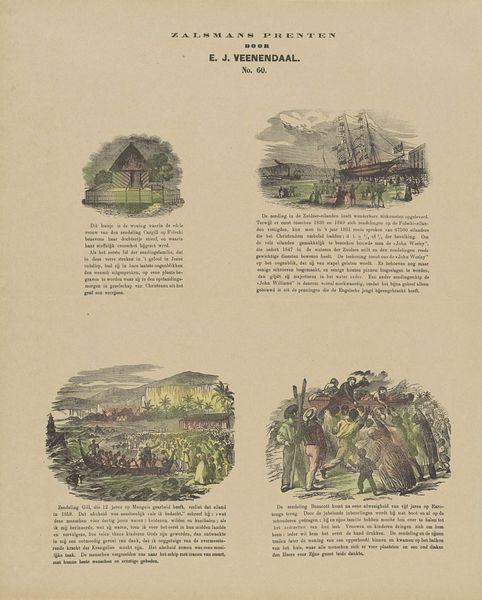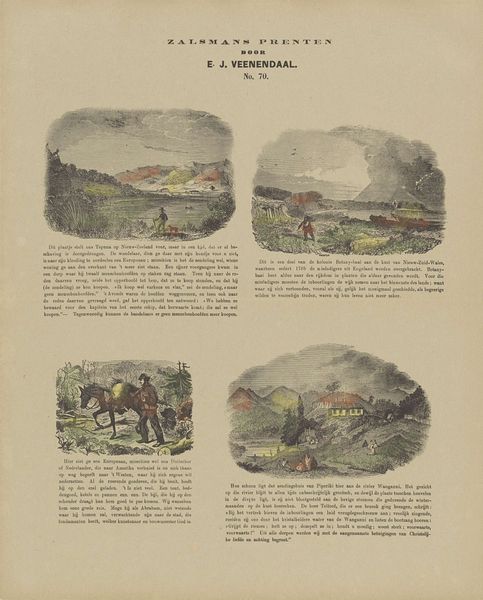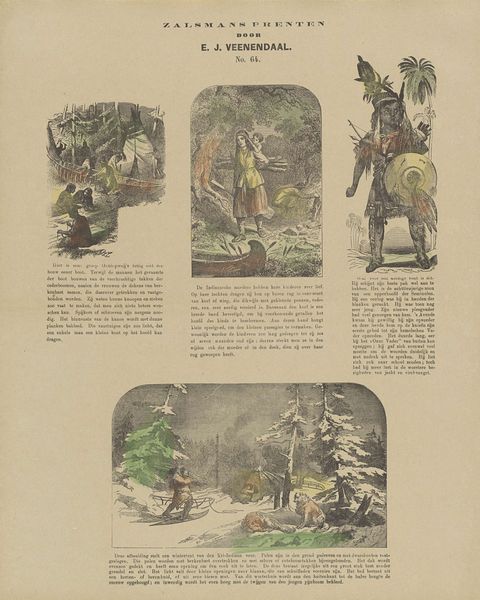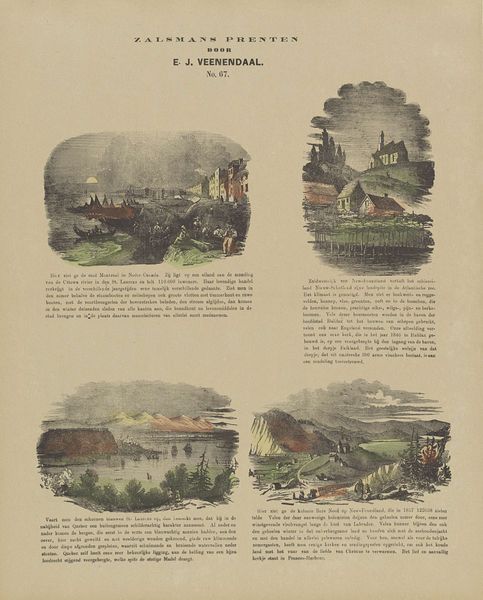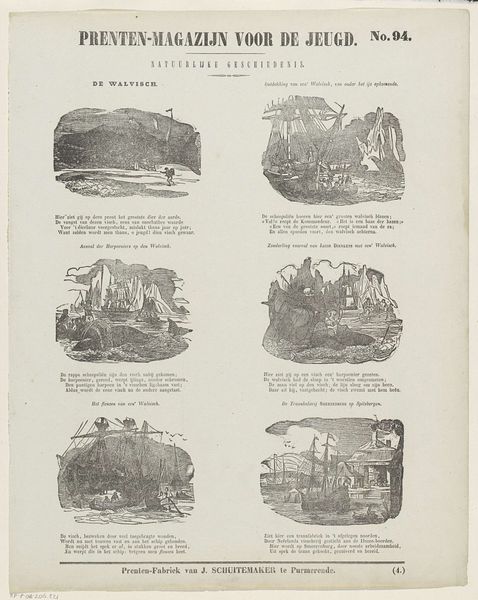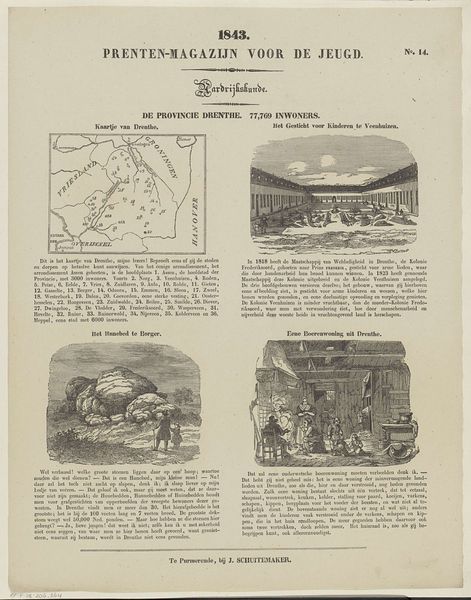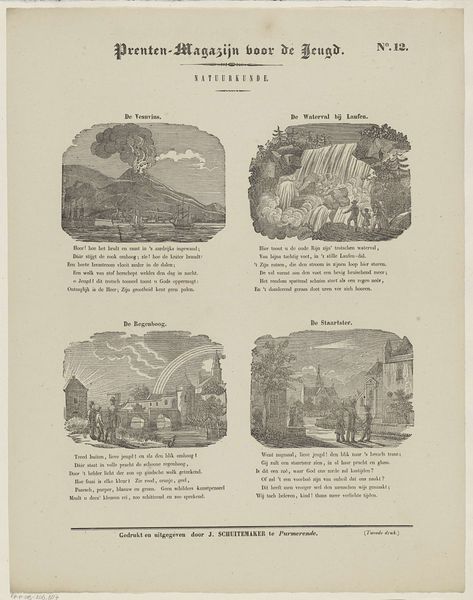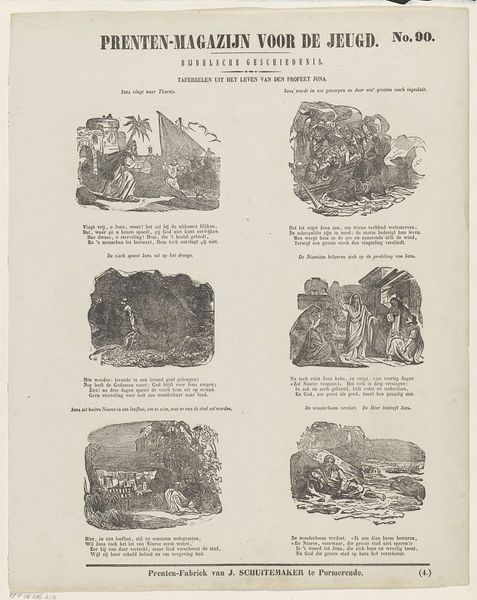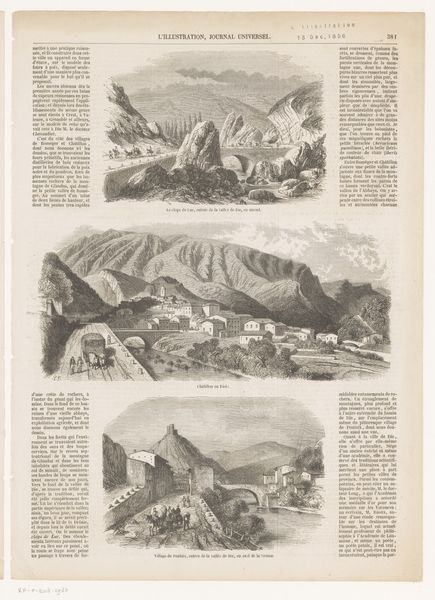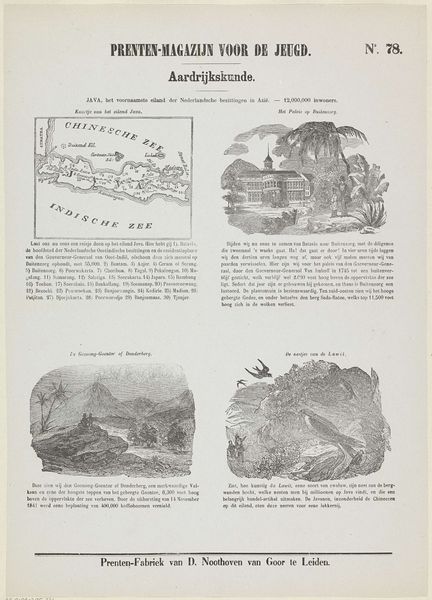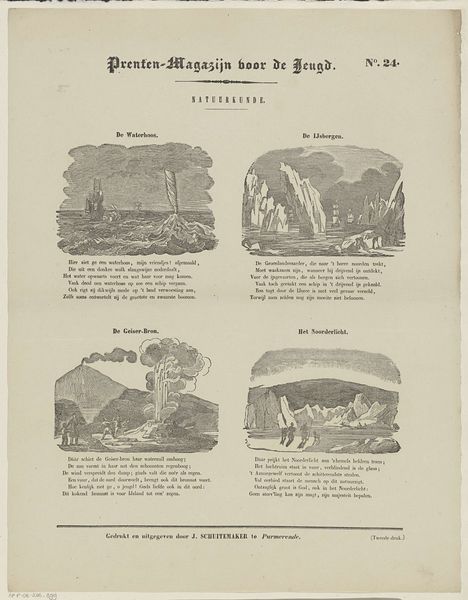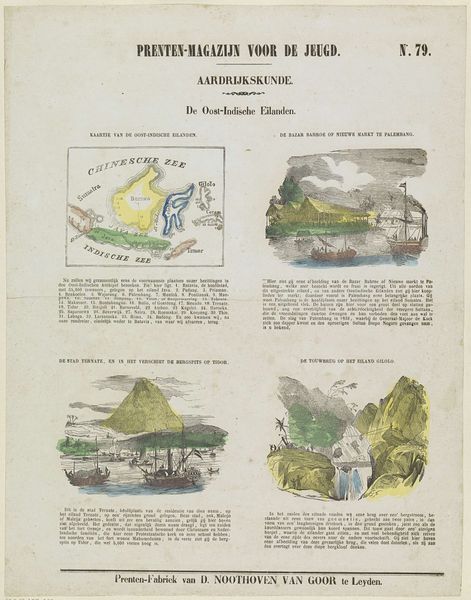
Ontmoeting tussen Henry Hudson en oorspronkelijke Noord-Amerikanen, Pocahontas, de kust bij New-Foundland en het gedenkteken voor David Brainerd 1869 - 1882
0:00
0:00
Dimensions: height 425 mm, width 345 mm
Copyright: Rijks Museum: Open Domain
Curator: This is an engraving dating from between 1869 and 1882 attributed to J. Johnston. It’s titled “Ontmoeting tussen Henry Hudson en oorspronkelijke Noord-Amerikanen, Pocahontas, de kust bij New-Foundland en het gedenkteken voor David Brainerd,” which translates to, "Encounter between Henry Hudson and Native Americans, Pocahontas, the coast of New-Foundland and the memorial for David Brainerd.” Quite a mouthful. Editor: It feels very… fragmented. It jumps around to various subjects. And the linework, it’s quite dense in some areas and almost nonexistent in others, making it a challenge to truly see. The use of printing here suggests a mass production and distribution effort. Were these engravings used in books or periodicals, perhaps? Curator: Indeed, these prints were intended for a wide audience as book illustrations. The themes tie into Romanticism's fascination with the historical and its creation of grand narratives, as well as promoting colonial narratives and Christian ideals, all packaged within a single frame, ready for easy consumption and reproduction. Notice the different panels and how each depicts very specific cultural, colonial, and religious milestones in North American history. Editor: Ah, so it is the packaging and dissemination that become equally important as the images themselves! Take, for instance, the way the scene depicting the meeting between Hudson and Native Americans is presented as a key historical moment. It makes me wonder about the means used for such colonial perspectives to become so ingrained in society. How was this particular image reproduced? What materials were used in the printing process, and how accessible would this image have been to various socioeconomic classes? The paper itself, the inks… all part of the story of its impact. Curator: The engraving, as a medium, lent itself well to mass distribution in books and periodicals, making it relatively accessible to the burgeoning literate public. These were made to disseminate very particular political and cultural messages that advanced specific ideas. And because it’s a historical-themed print, consider who might have purchased these images and the intended message they conveyed about identity, history, and progress. Editor: The framing then highlights that, emphasizing how materiality and process often influence both reception and comprehension, and therefore, ultimately shape meaning and even control interpretation. By examining the labor and materials, one can appreciate the reach and embedded ideologies perpetuated through them. Curator: Absolutely. Considering all the details adds complexity to its study, highlighting the convergence of culture, commerce, and identity in the late 19th century. Editor: I agree. This multi-paneled work provides ample evidence for those keen to trace the evolution and cultural significance of a very interesting piece.
Comments
No comments
Be the first to comment and join the conversation on the ultimate creative platform.
